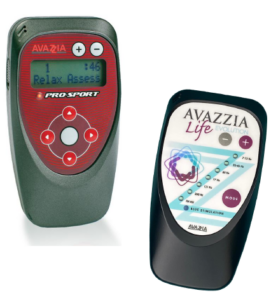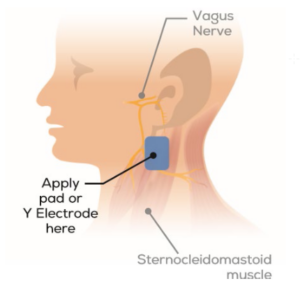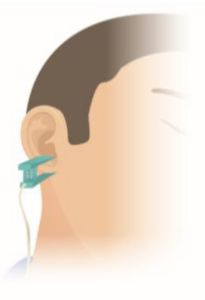
Bill Gates, Albert Einstein, and Andy Warhol. Do you know what they all had in common? These great minds were all considered to be on the autism spectrum. Even the “Father of Scalar Waves,” Nikola Tesla, was thought to have been autistic – reinforcing the notion that our world is indeed a better place thanks to the innovation of those who think differently.
The Autism Spectrum
It’s important to acknowledge that those living with Autism Spectrum Disorder (or ASD) function on a spectrum. Certain people are considered highly gifted (think: Albert Einstein); others experience little to no interference in their daily lives, and some need a great deal of support and help.
Regardless of where one falls on the spectrum, certain aspects of autism can make life challenging, a major one being feelings of restlessness, overwhelm, and anxiety.
Common triggers for a feeling of anxiety in those with ASD:
- Social situations
- Sensory overload
- Unstructured time
- Academic situations
Luckily, a natural autism treatment has successfully minimized anxiety in those with ASD in our clinic. Today, we will explain how microcurrent therapy can make the world more comfortable for neurodivergent people.
A note on the word “neurodivergent”: This term suggests a scientific understanding of “neurotypicality.” But this is a misconception, as each human is wired differently. It would be naive to try and generalize what is considered “normal” among the billions of people on our planet. Neurotypicality, however, does exist as a cultural and social construct that has profound implications for medicine, employment, education, and everyday life.
What is Autism?
Many of us are familiar with the term “autism,” but unfortunately, there are many false notions out there of what it truly is. ASDs are a group of complex and diverse developmental conditions involving multiple neural system abnormalities.
Autism is non-curable and is widely believed to result from the brain being “wired” differently from the general population. Surprisingly, there is quite a bit of overlap between ADHD and autism, including language delays, sensory-over responsivity, difficulty regulating emotions, and feelings of being overwhelmed in social situations.
4 Facts About ASD:
- The CDC estimates that 1 in every 54 children has been identified with autism in the United States.
- ASD occurs in all ethnic, racial, and socioeconomic groups.
- ASD is 4 times more common in males than females.
- Early intervention provides the best opportunity to support healthy development in those with ASD.
Challenges Posed by Autism
We want to point out that we don’t see autism as a problem to be fixed or “solved.” As we mentioned in our blog, Exploring Models of Disability, each person deserves the opportunity to move through the world in a way that affords them the opportunity to realize their wants, hopes, and dreams – precisely as they are. We look at autism through a lens of “equity,” which means we recognize that we do not all start with the same privileges and must acknowledge and adjust imbalances as a society.
Nevertheless, some people with autism want or could benefit from treatment – like microcurrent therapy – as it has been shown to make their everyday lives easier and more enjoyable.
Microcurrent: A Natural Autism Treatment Option
Conventional medicine treats ASD with medications that may help manage symptoms like inability to focus, high energy levels, depression, or seizures. For those who would like to try a natural autism treatment, we recommend considering microcurrent therapy.
This blog aims to explain how microcurrent therapy can help address the overlap between anxiety and autism, as we believe this is one of microcurrent’s most effective and most helpful applications in the treatment of ASD.
Vagus Nerve Stimulation
The Vagus nerve (the 10th cranial nerve) is responsible for overseeing the body’s response to stress. By stimulating this powerful neural highway with gentle microcurrent pulses, you can ease an overactive nervous system. Electrical stimulation of the Vagus nerve can be done either through a device implanted in the body or an external device applied to the skin (like our Avazzia microcurrent devices). Vagus nerve stimulation is an FDA-approved treatment for depression, seizures, and cluster headaches. This treatment is also approved in Europe to treat epilepsy, depression, and pain.
But you may be wondering, “is Vagus nerve stimulation effective as a natural autism treatment”? In our experience, it is extremely helpful in alleviating communication problems between the brain and the body while also improving anxiety. Recently, researchers at published an article titled “Transcutaneous Vagus Nerve Stimulation: A Promising Method for treatment of Autism Spectrum Disorders.” In this article, the authors hypothesized that Vagus nerve stimulation was a safe and promising treatment for ASD, not only for comorbid epilepsy and depression but also for core symptoms.

To utilize Vagus nerve stimulation as a natural autism treatment, you will need either the Avazzia Pro Sport III or the Avazzia Life Evolution, as both devices can generate the required frequencies for this protocol. As for accessories, you will need either a Vagus Nerve Conductive Pad or a Y-Electrode.
How to perform Vagus nerve stimulation: With your device set to an Alpha frequency (between 7-12 Hz), stimulate the ventral (right side) Vagus nerve.

- To see Dr. Rob Vanbergen demonstrate how to perform Vagus nerve stimulation, please watch the short video below:
- To learn more about Vagus nerve stimulation and how it can assist you in returning to a parasympathetic nervous state and achieve homeostasis in times of stress or anxiety, please read our blog, Polyvagal Theory and Vagus Nerve Stimulation.
Conductive Ear Clips
Conductive Ear Clips can be an excellent natural autism treatment as far as anxiety is concerned. This easy-to-use and comfortable accessory lets you deliver the essential algorithms (Alpha waves) for relaxation right through the earlobes. Ear Clips work so well for emotional distress because they calm the peripheral nervous system and stimulate reflexology points, triggering a body-wide soothing effect. If you’re looking to use microcurrent therapy as a natural autism treatment—consider giving our Conductive Ear Clips a try as soon as possible.

How to use ear clips: With your device set to an Alpha frequency (between 7-12 Hz), simply attach the ear clips and sit back until you start to feel more relaxed and grounded. If using Conductive Ear Clips with children, you may want to encourage a relaxing activity during treatment like reading a book, playing with blocks, or drawing. Ear clips can be worn for up to two hours, but it typically doesn’t take very long to start feeling their calming effects.
To see Dr. Rob Vanbergen demonstrate how to use the ear clips and explain why they are so helpful in easing anxiety, please watch the video below:
Questions About Microcurrent as a Natural Autism Treatment?
If you would like to speak to our staff about using microcurrent for ASD, please don’t hesitate to reach out for a complimentary consultation. Our team has an intimate knowledge of this microcurrent application and would be more than happy to help you get started if that is something you’re interested in.
Book your complimentary consultation today by clicking HERE
Sources cited:





